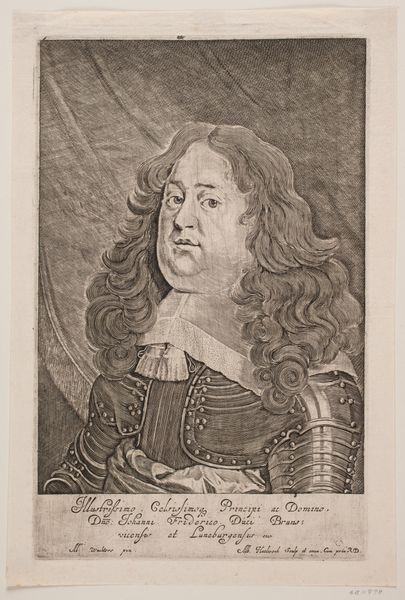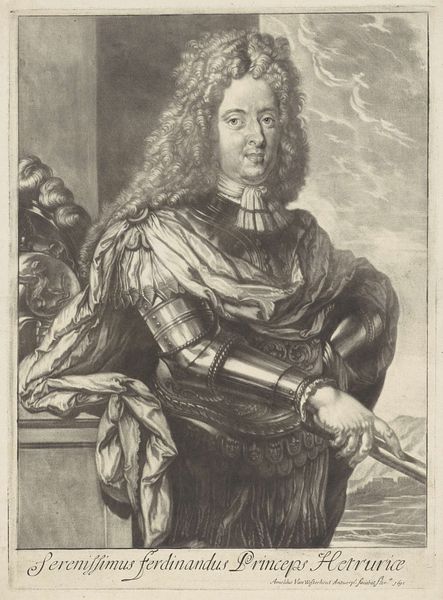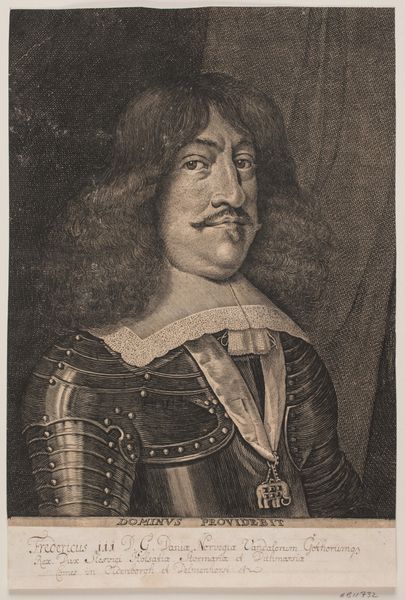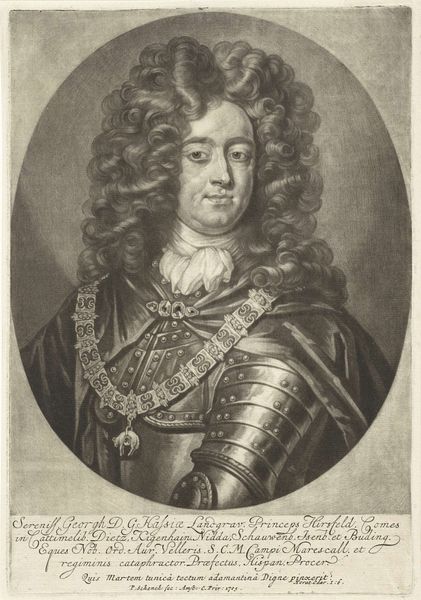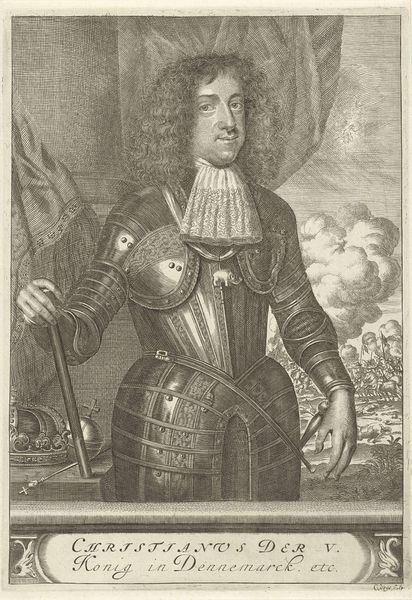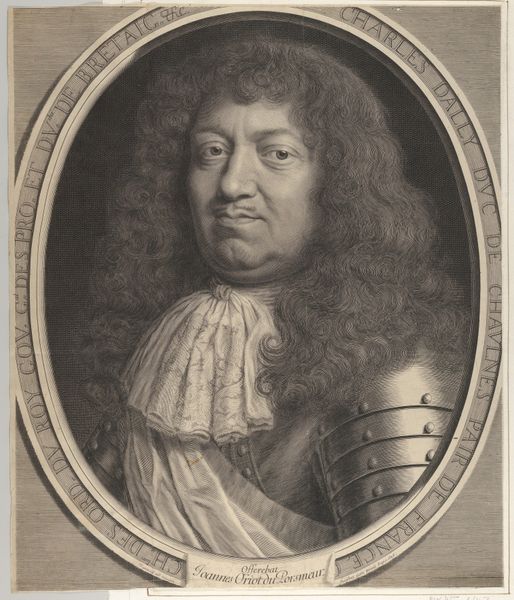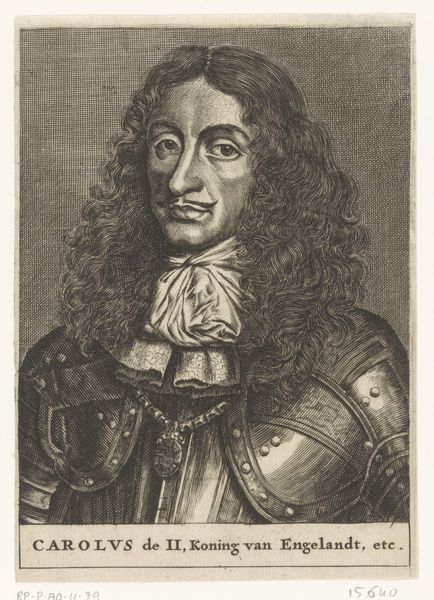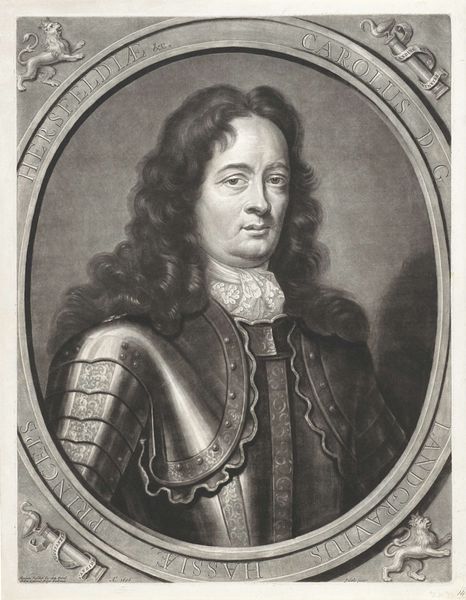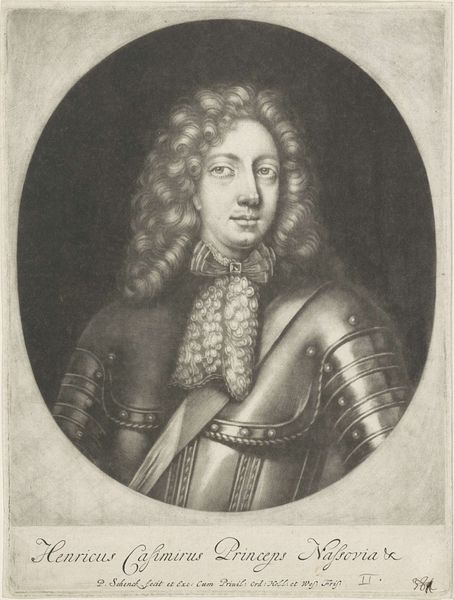
print, metal, engraving
#
portrait
#
baroque
# print
#
metal
#
history-painting
#
engraving
Dimensions: 298 mm (height) x 211 mm (width) (bladmaal)
Curator: Here we have Albert Haelwegh's engraving, "Johan Friedrich af Braunschweig," dating from 1658 to 1662. The print is currently held here at the SMK. What are your initial thoughts? Editor: Stark and commanding. There's an immediate impression of the subject's...presence, shall we say, amplified by the armor and opulent wig, contrasted against the very flat background. The contrast seems deliberate, pushing the figure forward. Curator: Indeed. Haelwegh’s mastery in manipulating metal plates allowed for the reproduction of intricate details. The subject, Duke Johan Friedrich, is visually constructed through labor-intensive processes; consider the societal implications embedded in producing and distributing images of power during that time. Editor: Agreed. The visual weight is concentrated at the very front and top of the work, with a slightly disturbing effect as it throws his face into prominence and creates a complex interplay of textures. Note how Haelwegh employed hatching and cross-hatching to render the luminosity of the metal armor. The inscription below functions both as a dedication and as an element that anchors the composition. Curator: Right, and if we look closer at this inscription, the meticulous nature in crafting these letters suggests the societal importance attached to the printed word in solidifying nobility status and communicating socio-political narratives to a wider audience. The materiality of the metal plate used in the engraving directly influenced the aesthetic and the societal context of the work. Editor: I'd also highlight the way the wig mimics and enhances the features, framing his face within elaborate curls, contrasting with the angularity of his metal armour, contributing to a striking image and echoing baroque excess, especially when one is accustomed to simpler lines. It is difficult to miss. Curator: The creation of the portrait was undoubtedly a complex collaborative project, the consumption and dissemination of prints reinforced hierarchies in society and created an economy around artistry and printing techniques, both shaped by material concerns. Editor: Looking at the way he managed light, texture, composition, one realizes that Albert Haelwegh created more than just a portrait—he composed a declaration. The aesthetic elements aren't merely decorative; they reinforce and shape our perception of power. Curator: Absolutely. Considering the context of its production, from mining to the printing press, truly reshapes our interpretation beyond aesthetic preferences. Editor: I'd say a close inspection of forms has been quite useful in peeling back some layers too, perhaps prompting further questions of cultural weight.
Comments
No comments
Be the first to comment and join the conversation on the ultimate creative platform.
